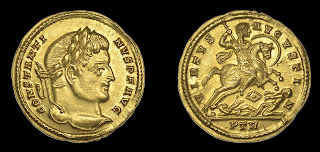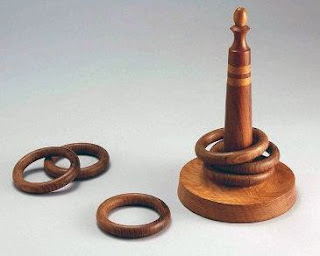It was introduced by our old friend Emperor Constantine the Great. He designed a gold coin weighing 4.45 grams. (As of this writing, gold is worth US$59.54/gram.) That weight stayed consistent from Constantine's time (early 300s) right up to the 1030s, after which Byzantine emperors started to make it with less gold because of a suffering economy due to military and civil problems. By the time of Alexios I it was being made with very little gold. Alexios eliminated the solidus in 1092, replacing it with the hyperpyron nomisma ("super-refined coin").
This hyperpyron was the same weight, though of slightly less purity because the debased solidi were recalled and melted down with gold to make the new coin. This coin was the standard until the mid-14th century, although it also suffered from succeeding emperors using less and less gold in it.
What was it "worth" in terms of buying power? Well, prices fluctuate over time and place, of course, and the day-to-day need for and value of goods is very different from how we live today. In Constantine's time, for instance, the average Roman would consume two pounds of wheat bread daily. In 320 CE a loaf of wheat bread could sell for two nummi (a silver coin, later made of copper or bronze). An early (pure gold) solidus at one time was worth 7200 nummi. A Roman cavalryman made 180 nummi per day. A solidus would be worth a month and a half salary for him. There's also a little more insight from this old post.
Next time, let's look at some prices closer to our time.














